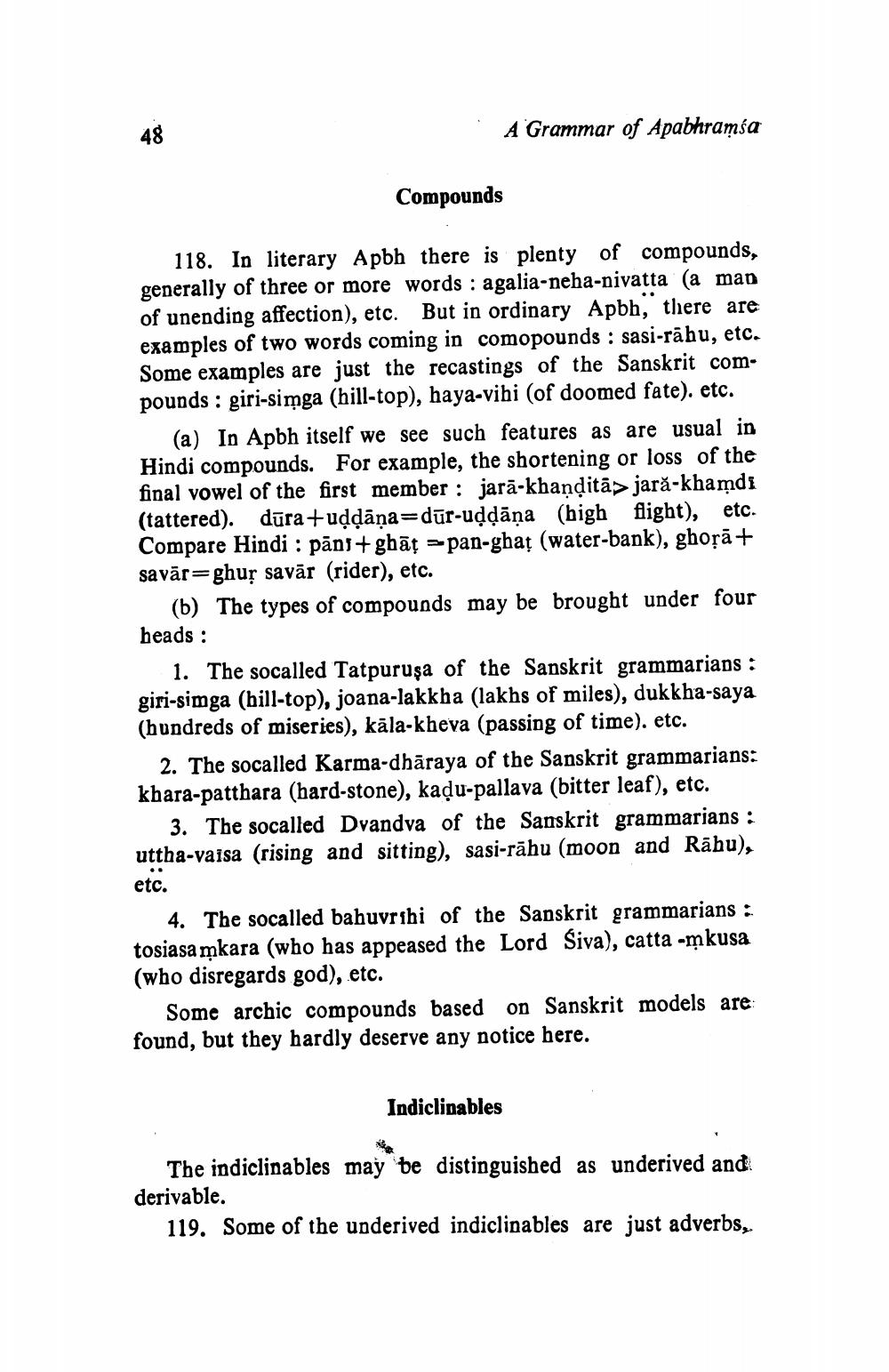________________
. A Grammar of Apabhramba
Compounds
118. In literary Apbh there is plenty of compounds, generally of three or more words : agalia-neha-nivatta (a man of unending affection), etc. But in ordinary Apbh, there are examples of two words coming in comopounds : sasi-rāhu, etc. Some examples are just the recastings of the Sanskrit compounds : giri-simga (hill-top), haya-vihi (of doomed fate). etc.
(a) In Apbh itself we see such features as are usual in Hindi compounds. For example, the shortening or loss of the final vowel of the first member : jarā-khanļitā> jară-khamdı (tattered). dūra +uļļāņa=dūr-uddāņa (high flight), etc. Compare Hindi : pāns+gbāț -pan-ghas (water-bank), ghoṣāt savār=ghur savās (rider), etc.
(b) The types of compounds may be brought under four heads :
1. The socalled Tatpuruşa of the Sanskrit grammarians : giri-simga (bill-top), joana-lakkha (lakhs of miles), dukkha-saya (hundreds of miseries), kāla-kheva (passing of time), etc.
2. The socalled Karma-dhāraya of the Sanskrit grammarians: khara-patthara (hard-stone), kadu-pallava (bitter leaf), etc.
3. The socalled Dvandva of the Sanskrit grammarians : uttha-vaisa (rising and sitting), sasi-rāhu (moon and Rāhu), etc.
4. The socalled bahuvrihi of the Sanskrit grammarians : tosiasa mkara (who has appeased the Lord Siva), catta -mkusa (who disregards god), etc.
Some archic compounds based on Sanskrit models are found, but they hardly deserve any notice here.
Indiclinables
The indiclinables may be distinguished as underived and derivable.
119. Some of the underived indiclinables are just adverbs,




